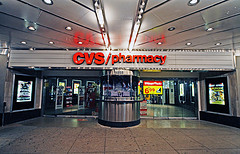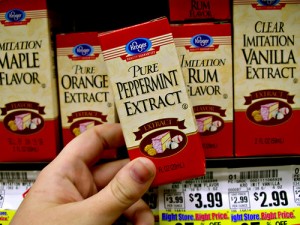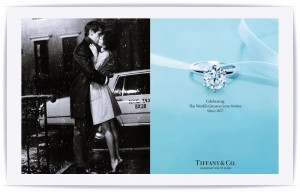

 Even though store brands have lost much of the stigma they held 10 or 20 years ago as cheap knock-offs, there is still a certain level of negativity surrounding them. Apparently, the negative brand impression was strong enough that companies like Wal-Mart, CVS and Walgreens are now calling them “captive brands” in an attempt to make them more palatable to a broader audience.
Even though store brands have lost much of the stigma they held 10 or 20 years ago as cheap knock-offs, there is still a certain level of negativity surrounding them. Apparently, the negative brand impression was strong enough that companies like Wal-Mart, CVS and Walgreens are now calling them “captive brands” in an attempt to make them more palatable to a broader audience.
Retailers make more money selling their own brands then they do selling products from other companies, so it makes sense that a push to rebrand store brands is a popular new trend that’s catching on quickly. Manufacturers are noticing that the rebranding effort is working as captive brands slowly steal market share from brands that once controlled the vast majority of categories on retail shelves.
Of course, its the retailers who decide how much shelf space to give to each brand, so it makes sense to create competitive captive branded products. If those captive brand products are positioned well within a category in terms of brand messaging and image, then those products have a good chance of stealing market share from the competitive products. Once customers make the switch, are satisfied after the switch and become loyal to a product within the captive brand line, chances are they’ll try another and spread the word.
The ultimate goal for captive brands, as with any brand, is to create brand loyalists and brand advocates who will influence others to try the brand as well thereby slowly chipping away at market share. As captive brand awareness, recognition, trial and repeat purchase increases, the retailer naturally chooses to increase shelf space for the captive brand at the expense of competitor brands. It’s no wonder why companies like Wal-Mart, CVS and Walgreens are investing time, money and resources in expanding captive brand product lines.
The first categories to feel the pinch from captive brands are those that tend to be overfilled with a myriad of brands and product choices such as health and beauty. Captive brands are taking shelf space not so much from the most popular brands at this point but from the smaller, less popular brands. Therefore, the number of branded products is shrinking as much of the existing shelf space shifts to the captive brand from a variety of smaller brands.
Walgreens even went so far as to create a “Brand Police” team who works to ensure every captive brand-related product and initiative appropriately conveys the overall brand image and drives ROI.
It looks like captive brands are positioned to grow significantly in the short-term. What do you think? If you’re company manufactures consumer products that sit on the same shelves as captive brand products, are you prepared to compete head-on with them?
Image: Flickr
Susan Gunelius is the author of 10 marketing, social media, branding, copywriting, and technology books, and she is President & CEO of KeySplash Creative, Inc., a marketing communications company. She also owns Women on Business, an award-wining blog for business women. She is a featured columnist for Entrepreneur.com and Forbes.com, and her marketing-related articles have appeared on websites such as MSNBC.com, BusinessWeek.com, TodayShow.com, and more.
She has over 20 years of experience in the marketing field having spent the first decade of her career directing marketing programs for some of the largest companies in the world, including divisions of AT&T and HSBC. Today, her clients include large and small companies around the world and household brands like Citigroup, Cox Communications, Intuit, and more. Susan is frequently interviewed about marketing and branding by television, radio, print, and online media organizations, and she speaks about these topics at events around the world. You can connect with her on Twitter, Facebook, LinkedIn, or Google+.



I’ve noticed recently that Tesco have developed a two-pronged approach to growing their own-brands:
1. when online shopping, they now offer recommendations of potential cheaper substitutes for the item I’m putting in my basket – often suggesting their own brand instead of the branded item I’ve chosen.
2. and they’ve rebranded the cheapest of their own brand ranges from ‘value’ to ‘market value’, and made it much more appealing.
Given the noticeable trend here for people to move towards cheaper supermarkets and to cheaper products within a supermarket, these seem to be two good moves. It’s certainly very interesting to watch.
Lucy, It sounds like Tesco is implementing some great strategies to push their own brands. I’m sure it’s something we’ll see more and more of in the near future.